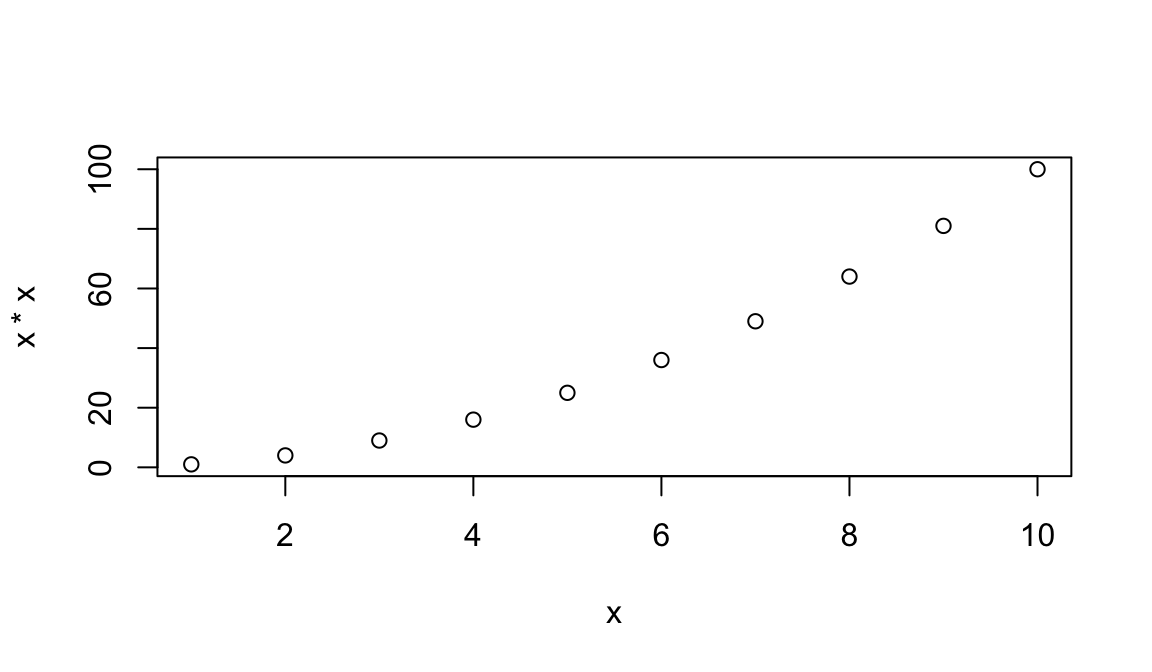4.6 Indexing vectors
Access elements of a vector with [ ], for example myvec[1] to get
the first element.
myvec[1]## [1] 10 myvec[2]## [1] 20You can also assign to a specific element of a vector.
myvec[2] <- 5
myvec## [1] 10 5 30 40 50Can we use a vector to index another vector? Yes!
myind <- c(4,3,2)
myvec[myind]## [1] 40 30 5We could equivalently have written:
myvec[c(4,3,2)]## [1] 40 30 54.6.1 Challenge: indexing
We can create and index character vectors as well. A teacher is using R to create their class schedule.
classSchedule <- c("science", "math", "reading", "writing", "PE")
classSchedule## [1] "science" "math" "reading" "writing" "PE"
Questions
-
What does
classSchedule[-3]produce? Based on what you find, use indexing to create a version of classSchedule without “science.” -
Use indexing to create a vector containing science, math, reading, science, and science.
-
Add a new class, coding, to
classSchedule.
4.6.2 Sequences
Another way to create a vector is with a colon :
1:10## [1] 1 2 3 4 5 6 7 8 9 10This can be useful when combined with indexing:
classSchedule[1:4]## [1] "science" "math" "reading" "writing"Sequences are useful for other things, such as a starting point for calculations:
x <- 1:10
x*x## [1] 1 4 9 16 25 36 49 64 81 100 plot(x, x*x)